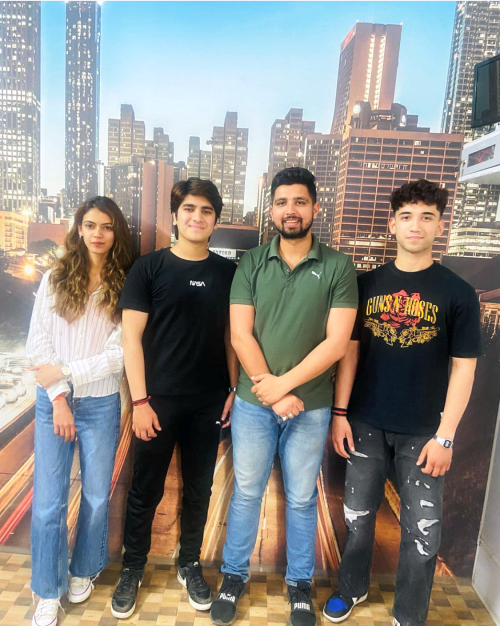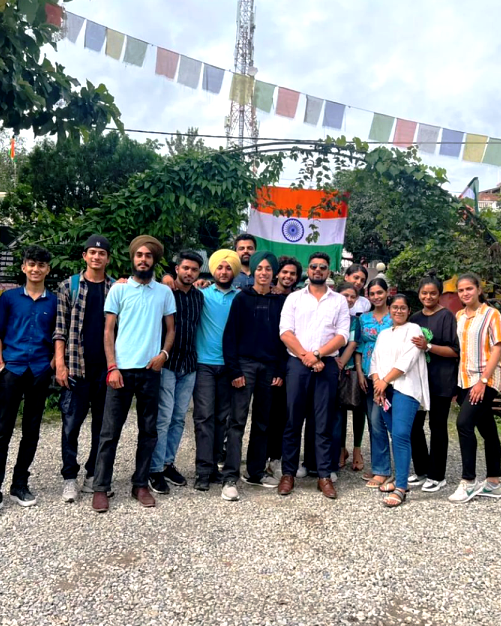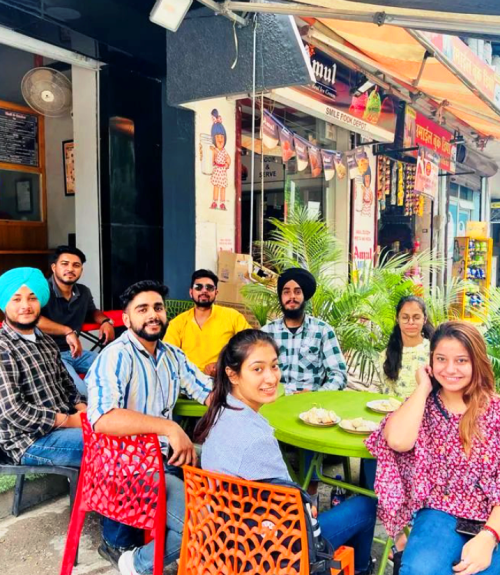Reading Passage 1:The Importance of Children’s Play
[In this type of question, candidates are asked to write only ONE WORD to complete notes on the given topic. For this type of question, first, skim the passage to find the keywords in the paragraph concerned with the answer, and then scan to find the exact word/words.]
Questions 1 and 2 are under the title: Uses of children’s play
Question 1: building a ‘magical kingdom’ may help develop ____________.
Keywords for the question: magical kingdom, help develop
We find the keyword ‘magical kingdom’ in paragraph no. 1. So, we should scan it carefully. In the last lines of the paragraph, the writer says, “Although she isn’t aware of it, this fantasy is helping her take her first steps towards her capacity for creativity and……”
Here, helping her take her first steps towards her capacity = help develop
So, the answer is: creativity
Question 2: board games involve ___________ and turn-taking
Keywords for the question: board games, turn-taking
We find the keyword ‘board game’ in paragraph no. 2, line no. 3. So, we should scan it carefully. The line says, “Later on, when they tire of this and settle down with a board game, she’s learning about the need to follow rules and take turns with a partner.”
Here, take turns with a partner = turn-taking
So, the answer is: rules
Questions 3-6 are under the title: Recent changes affecting children’s play
Question 3: populations of ________ have grown
Keywords for the question: recent changes, populations, grown
The question asks us to find out recent changes regarding populations. We find the answer in paragraph no. 5, lines 1-2. “But we live in changing times, and Whitebread is mindful of a worldwide decline in play, pointing out that over half the people in the world now live in cities.”
Here, we live in changing times = recent changes, over half the people = populations grown
So, the answer is: cities
Opportunities for free play are limited due to:
Questions 4 and 5 : fear of _________
Keywords for the question: opportunities, limited, fear of
The answers can be found in lines 2-5 of paragraph no. 5. The writer says, “The opportunities for free play, …. . . . .. . . . .. . are becoming increasingly scarce.’ he says. Outdoor play is curtailed by perceptions of risk to do with traffic, as well asparents’ increased wish to protect their children from being the victims of crime.”
Here, becoming increasingly scarce = limited, perceptions of risk = fear, parents’ increased wish to protect their children = fear
So, the answers are (in any order):
traffic
crime
Question 6: increased __________ in school
Keywords for the question: increased, school
The answer is in lines 5-6 of paragraph 5. The writer says here, “…..and by the emphasis on ‘earlier is better’ which is leading to greater competition in academic learning and schools.”
Here, leading to greater = increased
So, the answer is: competition
International policies on children’s play:
Question 7: it is difficult to find __________ to support new policies
Keywords for the question: difficult to find, support new policies
The answer is found in paragraph no. 6. Here, the author says, “International bodies like the United Nations and the European Union have begun to develop policies. … ..” Then in the last line, “ . .. . But what they often lack is the evidence to base policies on.”
Here, what they often lack = it is difficult to find
So, the answer is: evidence
Question 8: research needs to study the impact of play on the rest of the child’s __________.
Keywords for the question: research, need, study, rest of the child’s
The answer lies in lines 2-3 of paragraph no. 8. In the previous paragraph (paragraph no. 7) the writer talks about the need for research to study the impact. Then, in paragraph no. 8, they mention the reaction of Dr Jenny Gibson, “Dr Jenny Gibson agrees, pointing out. .. ., there is very little data on the impact it has on the child’s later life.”
Here, child’s later life = rest of the child’s life
So, the answer is: life
Questions 9-13: TRUE, FALSE, NOT GIVEN
In this type of question, candidates need to find out whether:
The statement in the question matches with the account in the text- TRUEThe statement in the question contradicts the account in the text- FALSEAnd the statement in the question has no clear connection with the account in the text- NOT GIVEN
[For this type of question, you can divide each statement into three independent pieces and make your way through with the answer.]
Question 9: Children with good self-control are known to be likely to do well at school later on.
Keywords for this question: good self-control, likely, do well, school, later
The answer lies in paragraph no. 11, “In a study carried out by Baker with toddlers and young pre-schoolers, she found that children with greater self-control solved problems more quickly when exploring an unfamiliar set-up requiring scientific reasoning. ‘This sort of evidence makes us think that giving children the chance to play will make them more successful problem-solvers in the long run.”
So, the lines clearly show that children with self-control do well in the long run (later on).
So, the answer is: TRUE
Question 10: The way a child plays may provide information about possible medical problems.
Keywords for this question: the way child plays, may provide info, possible medical problems
The answer lies in paragraph no. 13, where Dr Gibson says, “… Playful behaviour is also an important indicator of healthy social and emotional development. . .. . .. . . .give us important clues about their well-being and . .. .. . .. .useful in the diagnosis of neurodevelopmental disorders like autism.”
Here, the lines clearly show that the way a child’s plays can be used to identify medical problems (autism).
So, the answer is: TRUE
Question 11: Playing with dolls was found to benefit girls’ writing more than boys’ writing.
Keywords for this question: playing with dolls, benefit, girls’ writing,
We find a reference to playing with dolls in paragraph 14 line 4. But there is no comparison between girls’ writing and boys’ writing.
So, the answer is: NOT GIVEN
Question 12: Children had problems thinking up ideas when they first created the story with Lego.
Keywords for this question: children, problems, thinking up ideas, first created, Lego
The answer is lies in lines 3-5 of paragraph no. 15. “…. Children wrote longer and better-structured stories when they first played with dolls representing characters in the story. In the latest study, children first created their story with Lego, with similar results.”
The lines show the fact that children produced longer and better-structured stories when playing with dolls and Legos. They did not face any problems there. In the last lines of the same paragraph, the writer repeats the result. “With the Lego building.. .. .. …. The whole year of the project.”
So, the answer is: FALSE
Question 13: People nowadays regard children’s play as less significant than they did in the past.
Keywords for this question: nowadays, children’s play, less significant, did in the past
The first line of the last paragraph gives us the answer. “Somehow the importance of play has been lost in recent decades. It’s regarded as something trivial, or even as something negative that contrasts with ‘work’.”
The lines suggest that nowadays (in recent decades) children’s play has become less significant (has been lost, …. Regarded as something trivial)
So, the answer is: TRUE
Reading Passage 2:The growth of bike-sharing schemes around the world
Questions 14-18: Identifying information
[This question asks you to find information from the passage and write the number of the paragraph (A, B, C or D … .. ) in the answer sheet. Now, if the question is given in the very first part of the question set, I’d request you not to answer them. It’s mainly because this question will not follow any sequence, and so it will surely kill your time. Rather, you should answer all the other questions first. For this passage, first answer questions 4- 13. After finishing with these questions, come to questions 1-3. And just like the List of Headings, only read the first two lines or the last two lines of the expected paragraph initially. If you find the answers, you need not read the middle part. If you don’t find answers yet, you can skim the middle part of the paragraph. Keywords will be a useful matter here.]
Question 14: a description of how people misused a bike-sharing scheme
Keywords for this question: misused, bike-sharing
In paragraph E we find a reference to some problems the designers were facing in the project. Line line 4, the writer says, “The system, however, was prone to vandalism and theft.” Take a look at the statement made by Theo Molenaar too, “ ‘After every weekend there would always be a couple of bikes missing,’ Molenaar says, ‘I really have no idea what people did with them, . .. .”
So, the lines reveal the fact that people were misusing the scheme
So, the answer is: E
Question 15: an explanation of why a proposed bike-sharing scheme was turned down
Keywords for this question: proposed bike-sharing scheme, turned down
In lines 6-7 of paragraph C, the author says, “. . .. Nevertheless, the council unanimously rejected the plan, ‘They said that the bicycle belongs to the past. They saw a glorious future for the car,’. … .”
Here, rejected = was turned down,
So, the answer is: C
Question 16: a reference to a person being unable to profit from their work
Keywords for this question: person being unable, profit
Take a look at the very last line of paragraph F. “… But financially I didn’t really benefit from it, because I never filed for a patent.”
Here, financially I didn’t really benefit from it = unable to profit,
So, the answer is: F
Question 17: an explanation of the potential savings a bike-sharing scheme would bring
Keywords for this question: potential savings
In paragraph C, Schimmelpennink explained his idea to the city council. Take a close look at his explanation, “ . .. . It turned out that a white bicycle – per person, per kilometre – would cost the municipality only 10% of what it contributed to public transport per person, per kilometre.’. .. .”
Here, would cost the municipality only 10% = potential savings,
So, the answer is: C
Question 18: a reference to the problems a bike-sharing scheme was intended to solve
Keywords for this question: problems, intended to solve
In paragraph A, scan lines 3-5, “ . . .They believed the scheme, which was known as the Witte Fietsenplan, was an answer to the perceived threats of air pollution and consumerism.”
Here, was an answer to the perceived threats of air pollution and consumerism = the problems . . .. intended to solve
So, the answer is: A
Questions 19-22 (Multiple choice questions – choosing two from five options)
[Generally, in multiple choice questions, candidates have to choose one answer from three or four options. However, in this type of MCQ, candidates have to choose two answers from five / six options. So, the best tip to find out the answer is to remember that the keywords/clues will be found in two cases/ places. Candidates need to be aware of this fact.]
Questions 19 and 20: Which TWO of the following statements are made in the text about the Amsterdam bike-sharing scheme of 1999?
Keywords for this question: Amsterdam bike-sharing scheme of 1999
In paragraph D, look at lines 7-9, where the writer mentions people’s attitudes about the environment. “ ‘Times had changed,” he recalls. ‘People had become more environmentally conscious, and the Danish experiment had proved that bike-sharing was a real possibility. A new Witte Fietsenplan was launched in 1999 in Amsterdam.” So, this means the Amsterdam bike-sharing scheme of 1999 started (launched) because people’s attitude towards the environment was positive. (Answer: D)
Again, the reference to the Amsterdam bike-sharing scheme of 1999 is in paragraph D. In the same paragraph we find that the Dutch Bank Postbankdeveloped a chip card for the project. But in the next paragraph (paragraph E) the writer says in lines 7-8 , “. . But the biggest blow came when Postbank decided to abolish the chip card, because it wasn’t profitable.. .. . .” This means the partner (Postbank withdrew its support for the scheme). (Answer: B)
So, the answers are (in any order):
B (It failed when a partner in the scheme withdraw support.)
D (It was made possible by a change in people’s attitudes.)
Questions 21 and 22: Which TWO of the following statements are made in the text about Amsterdam today?
Keywords for this question: Amsterdam today
The answer lies in paragraph G because the paragraph starts with “In Amsterdam today. ..”.
First, take a look at lines 2-3, “. . . it is regarded as one of the two most cycle-friendly capitals in the world – … .” (Answer E)
Again, look at lines 6-7, “.. . People who travel on the underground don’t carry their bikes around. But often they need additional transport to reach their final destination.” The lines clearly explain that a bike-sharing scheme is very important for people who use underground tubes, because they need additional transport (bikes) to get to their expected destination. (Answer D)
So, the answers are (in any order):
D (A bike-sharing scheme would benefit residents who use public transport.)
E (The city has a reputation as a place that welcomes cyclists.)
Question 23-26: (Completing summary with ONE WORD ONLY):
[In this type of question, candidates are asked to ONE WORD ONLY to complete a summary on the given topic. For this type of question, first, skim the passage to find the keywords in the paragraph concerned with the answer, and then scan to find the exact word/words.]
Title of the summary: The first urban bike-sharing scheme
Question 23: The first bike-sharing scheme was the idea of the Dutch group Provo. The people who belonged to this group were ______________.
Keywords for this answer: idea, Dutch group Provo, people, belonged to this group,
The answer is in the second and third lines of paragraph A. “.. .Provo, the organisation that came up with the idea, was a group of Dutch activists who wanted to change society.” .
So, the answer is: activists
Question 24: They were concerned about damage to the environment and about ___________, and believed that the bike-sharing scheme would draw attention to these issues.
Keywords for this answer: concerned about, damage to the environment,
Lines 3-5 of paragraph A give us the answer. “…They believed the scheme, which . .. . .. . ., was an answer to the perceived threats of air pollution and consumerism.”
Here, threats of air pollution = damage to the environment
So, the answer is: consumerism
Question 25: As well as painting some bikes white, they handed out __________ that condemned the use of cars.
Keywords for this answer: painting, white, condemned, use of cars
The answer is in lines 5-7, “… . . In the centre of Amsterdam, they painted a small number of used bikes white. They also distributed leaflets describing the dangers of cars . . .. .. ..”
Here, distributed = handed out, describing the dangers of cars = condemned the use of cars
So, the answer is: leaflets
Question 26: However, the scheme was not a great success; almost as quickly as Provo left the bikes around the city, the __________ took them away. According to …….. . . .. . .. .
Keywords for this answer: not a great success, Provo left the bikes around the city, took them away
The answer is in paragraph B, lines 4-6, “. . .. The police were opposed to Provo’s initiatives and almost as soon as soon as the white bikes were distributed around the city, they removed them.”
Here, left the bikes around the city = the white bikes were distributed around the city, took them away = removed them,
So, the answer is: police
Reading Passage 3:Motivational factors and the hospitality industry
Questions 27-31 (Matching names of people with their ideas or statements)
[The rules for finding answers to this sort of question are simple. Just find the name of the person and read around it carefully . Then, give a quick look to check whether there is another statement or idea provided by the same person in the text. If there is, check the reference carefully and decide your answer. Remember, the questions will not follow any sequential order. Do the reverse method when the statements are in questions]
Question 27: Hotel managers need to know what would encourage good staff to remain.
Keywords for this question: hotel managers, need to know, encourage, staff, remain
The answer is in paragraph no. 9, first and last lines. Research done by Enz and Siguaw in 2000 concludes that, “. .. It is essential for hotel management to develop HRM practices that enable them to inspire and retain competent employees.” . .. .. . .. “This implies that it is beneficial for hotels managers to understand what practices are most favourable toincrease employee satisfaction and retention.”
Here, inspire = encourage, retention = staff to remain
So, the answer is: E (Enz and Siguaw)
Question 28: The actions of managers may make staff feel they shouldn’t move to a different employer.
Keywords for this question: actions, make staff feel, shouldn’t move, different employer
The answer is found in paragraph no. 5, in the very first lines. “Ng and Sorensen (2008) demonstrated that when managers provide recognition to employees, motivate employees to work together, and remove obstacles preventing effective performance, employees feel more obligated to stay with the company.”
Here, employees feel more obligated to stay with the company = staff feel they shouldn’t move to a different employer
So, the answer is: D (Ng and Sorensen)
Question 29: Little is done in the hospitality industry to help workers improve their skills.
Keywords for this question: little, done, hospitality, help workers, imporve skills
This answer can be traced in paragraph no. 4, at the very beginning. “Lucas also points out that ‘the substance of HRM practices does not appear to be designed to foster constructive relations with employees or to represent a management approach that enables developing and drawing out the full potential of people, . .. .”
The lines suggest that such HRM practices does very little (or nothing) to help the employees hone (sharpen or improve) their full potential (skills).
So, the answer is: B (Lucas)
Question 30: Staff are less likely to change jobs if cooperation is encouraged.
Keywords for this question: staff, less likely, change jobs, cooperation, encouraged
Again, the answer is found in paragraph no. 5, in the very first lines. “Ng and Sorensen (2008) demonstrated that when managers provide recognition to employees, motivate employees to work together, and remove obstacles preventing effective performance, employees feel more obligated to stay with the company.”
Here, recognition to employees, motivate employees to work together, and remove obstacles preventing effective performance, all these mean cooperation which are encourages by managers.
Also,employees feel more obligated to stay with the company = staff are less likely to change jobs
So, the answer is: D (Ng and Sorensen)
Question 31: Dissatisfaction with pay is not the only reason why hospitality workers change jobs.
Keywords for this question: Dissatisfaction, pay, not, only reason, hospitality workers change jobs
In paragraph 9 (last lines) and paragraph 10 (first lines) we find the research result found by Maroudas et al. (et al.is a Latin phrase which means and others.).
In paragraph no. 9 the writer mentions the statement of Maroudas and others, “as achievement and recognition. When these factors are unfavourable, job dissatisfaction may result. Significantly, though, just fulfilling these needs does not result in satisfaction, but only in the reduction of dissatisfaction.”
Then, in paragraph no. 10, there is another remark by Maroudas and others. “Employees also have intrinsic motivation needs or motivators, which include such factors as achievement and recognition. Unlike extrinsic factors, motivator factors may ideally result in job satisfaction.”
These lines suggest that job dissatisfaction does not come only from pay, rather it may arise from other factors such as achievement and recognition.
So, the answer is: C (Maroudas et al.)
Questions 32-35 (YES, NO, NOT GIVEN)
In this type of question, candidates are asked to find out whether:
The statement in the question matches the claims of the writer – YESThe statement in the question contradicts the claims of the writer – NOIt is impossible to say what the writer thinks about this – NOT GIVEN
[For this type of question, you can divide each statement into three independent pieces and make your way through with the answer.]
Question 32: One reason for high staff turnover in the hospitality industry is poor morale.
Keywords for this question: high staff turnover, poor morale
The answer is found in paragraph no. 4, lines 4-7. The writer gives account of the research done by Maroudas and others (2008). The lines say, “In addition, or maybe as a result, high employee turnover has been a recurring problem throughout the hospitality industry. Among the many cited reasons are low compensation, inadequate benefits, poor working conditions and compromised employee morale and attitudes.”
So, the answer is: YES
Question 33: Research has shown that staff tend to dislike their workplace.
Keywords for this question: staff, have, tendency, dislike, workplace
The answer can be found in the beginning of paragraph no. 6. The writer gives account of the research done by Spector and others in 2000. “While it seems likely that employees’ reactions to their job characteristics could be affected by a predisposition to view their work environment negatively, no evidence exists to support this hypothesis.” So, the lines clarify the point that there is no proof (no evidence exists to support this hypothesis) that workers view their workplace negatively. The information contradicts with the given question.
So, the answer is: NO
Question 34: An improvement in working conditions and job security makes staff satisfied with their jobs.
Keywords for this question: improvement, working conditions, job security, satisfied
In paragraph 9, the writer gives reference to Herzberg (1966) who showed that when factors like working conditions and job security “… are unfavourable, job dissatisfaction may result.”. Then the writer provides the findings of Maroudas and other, 2008. “Significantly, though, just filling these needs does not result in satisfaction, but only . . .. …” So, the lines are contradictory to question. Improving working conditions and job security does not make staff satisfied with their jobs.
So, the answer is: NO
Question 35: Staff should be allowed to choose when they take breaks during the working day.
Keywords for this question: should be allowed, choose, take breaks,
There is NO INFORMATION regarding taking breaks during the working days in this passage.
So, the answer is: NOT GIVEN
Questions 36-40 (Completing summary with ONE WORD ONLY):
[In this type of question, candidates are asked to ONE WORD ONLY to complete a summary on the given topic. For this type of question, first, skim the passage to find the keywords in the paragraph concerned with the answer, and then scan to find the exact word/words.]
Title of the summary: Fun at Work
Question 36: Tews, Michel and Stafford carried out research on staff in an American chain of ____________.
Keywords for this question: Tews, Michel and Stafford, American chain
The answer can be found in paragraph no. 11 where we find the names Tews, Michel and Stafford. Look at lines 1-3, “For example, Tews, Michel, and Stafford (2013) conducted a study focusing on staff from a chain of themed restaurants in the United States.
So, the answer is: restaurants
Question 37: They discovered that activities designed for staff to have fun improved their ___________,
Keywords for this question: activities designed for staff, have fun, improved
We can find the answer in paragraph no. 11. In line no.3 the writer says, “ It was found that fun activities had a favourable impact on performance . . .. .”
So, the answer is: performance
Question 38: and that management involvement led to lower staff ___________.
Keywords for this question: management involvement, lower
Again, this answer can be found be in paragraph no. 11. In line no. 4, the author says, “. . .. and manager support for fun had a favourable impact in reducing turnover.” Here, reducing = lower
So, the answer is: turnover
Questions 39 and 40: They also found that the activities needed to fit with both the company’s ____________ and the _______________ of the staff.
Keywords for this question: activities, needed to fit with both, company’s
The answers are in lines 4-6 of paragraph no. 11. The writer says, “Their findings support the view that fun may indeed have a beneficial effect, but the framing of that fun must be carefully aligned with both organizational goals and employee characteristics.”
Here, activities needed to fit with = must be carefully aligned with, company = organization, staff = employee.
So, the answers are:
- goals
- characteristics








